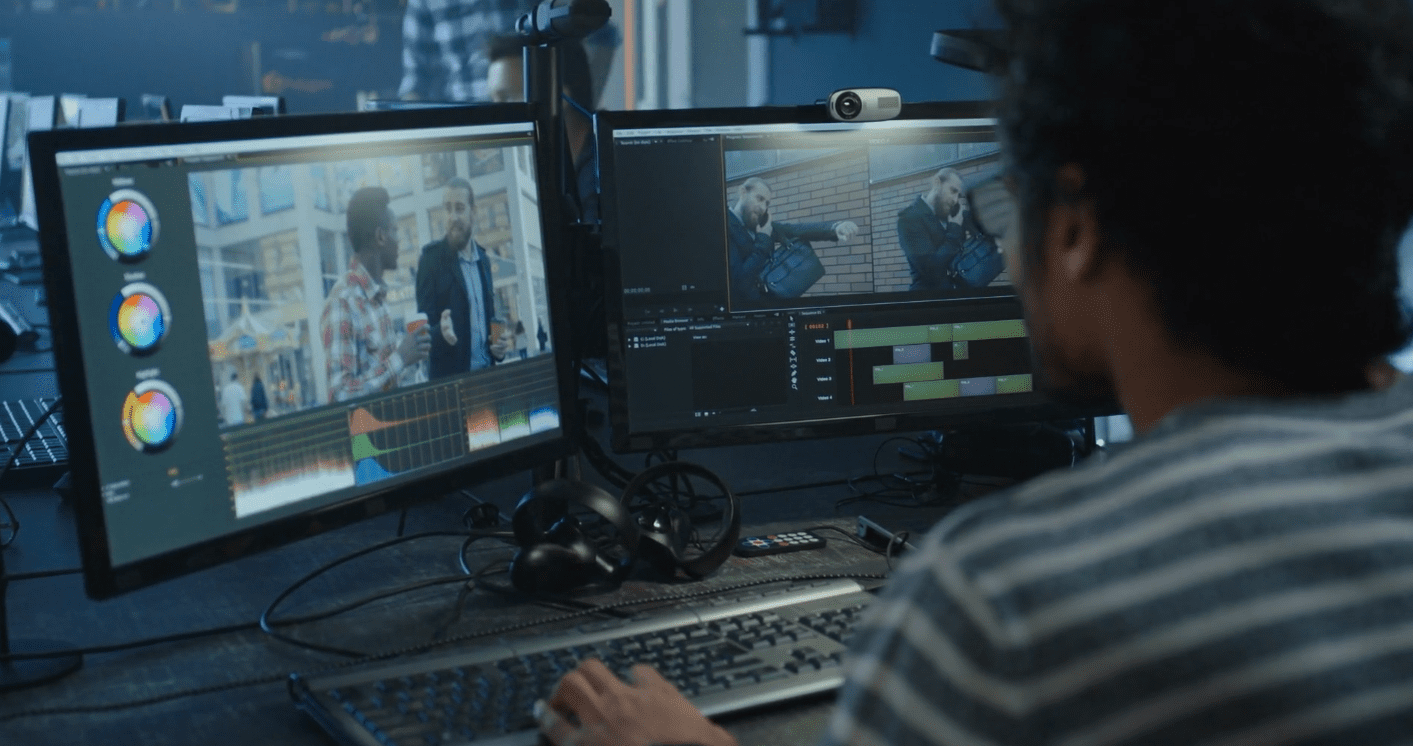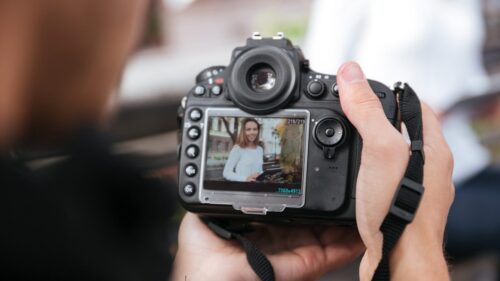Here’s a common refrain that you’ve probably heard before: “Films are made in the editing room.” It’s common because, in a lot of ways, it’s true. If you aren’t up on the latest film editing techniques for video creation, it might be holding your project back. Whether you’re making feature films, YouTube videos, or anything in between, the importance of editing cannot be understated. It’s absolutely essential to your storytelling. Today there are many different types of film editing techniques you can deploy to achieve various effects that will help bring your message to life on the screen.
What is film editing?
One thing the most highly regarded filmmakers and content creators have in common is they all understand that editing is an art form. Your footage is essentially a shapeless block of clay waiting for you to sculpt it. Throughout the editing process, your ultimate goal is to weave shots and scenes together into a compelling story.
Film editing is where you put all the puzzle pieces of your footage together. But simply sticking segments back to back in chronological order isn’t going to cut it (sorry, pun intended). There’s an elegance to film editing. Doing it well requires you to consider not just how scenes flow together, but also the look and feel of multiple individual cuts throughout every sequence. Editing can make or break the entire tone of a production. That’s why editors often work closely with directors to make sure they stay same page as the project takes shape.
Of course, art is subjective, so there’s really no “right way” or “wrong way” to approach film editing. Editors and directors bring unique perspectives to a project, and varying combinations of visions will result in different forms of creative alchemy. That’s why two (or more) different editors will land on very different results — even when they both use the exact same footage.
There are plenty of established best practices and techniques top creators have used successfully over time, but in the end, your creativity is in the driver’s seat of your project.
Download this clip of a video editing timeline
Film editing process
Gone are the days of editors manually cutting and splicing celluloid film to achieve a desired effect. Thanks to the evolution of computer technology and the advent of digital editing software, these days you can create cinematic effects right from your home computer with off-the-shelf software.
The digital film editing revolution completely unlocked creative freedom for content creators. It’s why you’re now able to experiment with a vast arsenal of video editing techniques to achieve various outcomes. Editing can speed up time, or slow it down. It can make the audience feel anxious, or dissipate tension. It can warn us that something scary is coming, or remind us that everything’s going to be ok. Once you learn the different film editing techniques and see what they can empower you to create, it can transform your entire outlook on production.
Here are 10 of the most popular film editing techniques you can use in your projects right now:
10 film editing techniques
1. Standard cut
As the name suggests, the standard cut is one of the most commonly used editing techniques for video creation. It’s a no-frills editing technique you’d use to connect two scenes or between shots within a dialogue sequence. These cuts happen in the blink of an eye, and are virtually imperceptible.
2. L cut
L cuts and J cuts are opposite sides of the same film editing coin, and both relate to how the audio and video align between clips. With an L cut, a clip’s audio track continues playing as the visual components of the next clip comes into view. Both cuts are named for the shapes the clips make in an editing software’s timeline.
3. J cut
A J cut is essentially the reverse of an L cut. J cuts continue showing the visuals from one clip while the audio from the next clip fades in. Both L and J cuts are commonly used in documentary interviews, where a subject’s voice carries over to a new visual or a new visual appears ahead of a voiceover starting. J cuts can also help to link scenes together thematically through sound. At the beginning of “Saving Private Ryan”, the camera slowly zooms in on the main character kneeling at a gravesite as the sounds of crashing ocean waves fade in. The ocean sounds continue as the shot cuts to waves crashing on a Normandy beach on D-Day.
4. Match cut
Match cuts are used to link together two shots that share a common visual element — whether it’s colors, a shape, or even an action. Perhaps the most famous example of a match cut is right at the beginning of the film “2001: A Space Odyssey,” where a caveman throws a bone in the air and it becomes a spaceship floating against a blackened sky in the next scene.
5. Cutting on action
Cutting on action is another popular technique where you change the camera angle as your subject performs a movement or activity. This helps make cuts more smooth and less noticeable. For instance, a shot of a character pitching a baseball might cut to show an angle of the ball in flight right after the shot of their wind-up.
6. Jump cut
While many film editing techniques are designed to be nearly imperceptible, jump cuts are made to be seen. Rather than a technique like cutting on action, which helps smooth out transitions between shots, you’d use a jump cut when you want to deliberately disorient the audience, indicate a quick passage of time, or create the sense that something is amiss.
7. Transitions
Transitions are the connective tissue between scenes or shots. Very often, transitions are barely noticeable. But other times you can get creative with transitions and use them as a storytelling aid.
- Fade
One example of a transition effect is a fade to black, which you can use to denote a sharp tonal shift between scenes. You might use it after a particularly emotional or action-heavy sequence to add a sense of closure before the next scene.
- Fade
- Dissolve
You can use a dissolve transition effect in film editing to indicate a flashback sequence, a character’s memory, or a look into their thoughts. In a dissolve transition, a clip’s visual slowly disintegrates until the next scene begins.
- Dissolve
Download this light leaks transition overlay
8. Parallel editing
Also called “cross cut editing,” parallel editing involves cutting between two different scenes where action is happening simultaneously. You’d typically use parallel editing when you want to create a sense of heightened tension. A good example is the scene in “Ferris Bueller’s Day Off” that cuts back and forth between the truant title character racing to get home, and his suspicious parents who are trying to catch him in a lie.
9. Cutaway shots and cut ins
Cutaway shots can add context to a scene by temporarily taking the audience out of the action and showing them something that drives the story forward. Sometimes creators use them to break the fourth wall. There are a few brief examples of that in the 2015 movie “The Big Short.” There’s a part in that film that cuts to actors Selena Gomez and Margot Robbie, as themselves, explaining complex financial terms. These cutaways had the dual effect of imparting dry but important information to the audience while also adding some humor. Cutaways can also add tension by raising the stakes in a scene by giving the audience information the characters aren’t yet aware of.
10. Montage
Montages are a classic film editing technique you can use to show the passage of time, or to show a character evolving or getting something done. (Think: The training sequences in the “Rocky” movies or the shopping scene in “Pretty Woman”). Montages typically do not feature dialogue, instead a film score or other music provides the only audio. Montages have become so well known, they’re often parodied for comedic effect.
Use Storyblocks templates to make video content creation easier
With a fresh understanding of some common editing techniques, you’re ready to jump into your next project. If you’re just beginning your editing journey, or if you simply want to speed up your process, we’ve got you. Storyblocks templates for Adobe After Effects, Premiere Pro, Apple Motion, and DaVinci Resolve provide everything you need to easily add stunning visual effects to your next video. Downloadable templates are just one of many ways Storyblocks can help you need to tell richer, more compelling stories.
Ready to learn more about how you can use Storyblocks to make your next project your best work yet? Get started by exploring our individual and business plans today.



